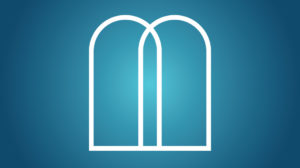Choose Life


A
ntoninus the Roman Emperor made the following assertion to Rabi Yehuda HaNasi (Sanhedrin 91:a): Both the body and soul will claim innocence at the time of judgment. The body will say “The soul is guilty; since it departed from me I have lain in the grave as a stone and not sinned.” The soul will say “The body is guilty; since I left it I have been flying in the air as a bird far away from the world of sin.”
Rabbeinu Hakadosh answered him with a parable: There were two guards assigned to the king’s orchard one blind and one lame. One day the lame one said to the blind one “I see beautiful figs on the trees. Place me on your shoulders and we’ll work together to get the figs.”
When the king discovered that some fruits were missing he demanded to know who had taken them. The lame guard said “Do I have feet to travel to the figs? I certainly couldn’t have taken them.” The blind guard said “Do I have eyes to see where the figs are? I certainly couldn’t have taken them.”
What did the king do? He mounted the lame one on the shoulders of the blind one and judged them as one unit.
In a similar vein what will Hakadosh Boruch Hu do in response to the claims of the body and soul? He’ll hurl the neshamah back into the guf and judge them as one on the Day of Judgment.
Both the body — the part of man that’s often blinded by the material world and the soul — the part which has no physical mobility will be judged together for the deeds they performed in unity. Just as man traverses This World as a fusion of body and soul so too his guf and neshamah will reunite in elevated form and experience reward and punishment together.
This enduring partnership of the body and soul is central to the Rambam’s 13th and final Article of Faith: I believe with complete belief that there will be a resurrection of the dead at the time that Hashem wills and that His Name will be blessed and His Mention exalted forever and for all time.
United We Stand
This principle tells us that it’s not only the soul that lives on after death; the body too will return. The Ramchal explains that it’s inconceivable that the body would not be rewarded together with the soul for they toiled together to perform mitzvos and Hashem never withholds reward from one who deserves it.
In a similar vein Rav Yitzchok Kirzner points out that the body is not inherently sinful. The guf is an unfinished product a resource waiting to be employed and cultivated. Under the neshamah’s influence it can become a sacred vessel; when it’s assaulted by the yetzer hara and succumbs to temptation it becomes base and dishonorable.
Because we value the guf we’re enjoined to treat it with dignity: To keep it healthy not to deface or defile it and to clothe it respectfully. We carefully deposit the body in the ground at death mark the grave and safeguard our cemeteries. All of this attests to our belief in techiyas hameisim.
The alliance of body and soul is what makes man unique among all of creation. By contrast an animal possesses only a body; a malach is but a soul. A partnership thrives when it’s of mutual benefit to each element. The human guf relies on the neshamah for animation and elevation; what in turn does the guf contribute?
When I present this topic to my students I conduct the following experiment: I tell them to write down the first three mitzvos that enter their mind. Then I ask them to check off which of these mitzvos require a guf — a physical body — in order to be properly performed. The point of our exercise becomes immediately evident.
Indeed the neshamah is in great need of a guf to serve as its agent in order to perform the will of its Creator — to hear shofar to host guests to recite brachos and to give tzedakah. Furthermore the neshamah gains something else from the relationship: By enabling the guf to transcend its physicality it becomes elevated for it has fulfilled the significant purpose of its creation.
Death as Transition
This ultimate unification could have been readily achieved by Adam Harishon. Had he served Hashem properly it would have resulted in the elevation and purification of both guf and neshamah. Instead Adam’s sin resulted in him becoming a mortal being. It was now necessary for the body and soul to undergo separate purifications.
The guf would be purified by burial and decay and the neshamah unencumbered by the guf would be elevated in the spiritual realm — if necessary by the cleansing of Gehinnom and then by experiencing reward in proportion to its accomplishments in This World. They would then reunite at techiyas hameisim.
The Mishnah (Sanhedrin 90:a) states that one who doesn’t believe in techiyas hameisim min haTorah will be denied his portion in Olam Haba. It’s not sufficient to believe in the general concept of techiyas hameisim. One must also acknowledge that the promise of resurrection is explicit in the Torah. The Gemara records numerous allusions to and proofs of techiyas hameisim in Tanach.
Rav Shimon Schwab notes that the brachah of mechayai hameisim in Shemoneh Esrei references other forms of Hashem’s salvation: rainfall support of the fallen healing of the sick and release of the imprisoned. We’re able to believe and trust in the promise of resurrection because we’ve witnessed somewhat similar events: new beginnings miraculous reversals decay and regrowth.
The belief in resurrection is also clearly stated in the Mishnah (Pirkei Avos 4: 29): Those who are born will die; those who die will live again.
Oops! We could not locate your form.










